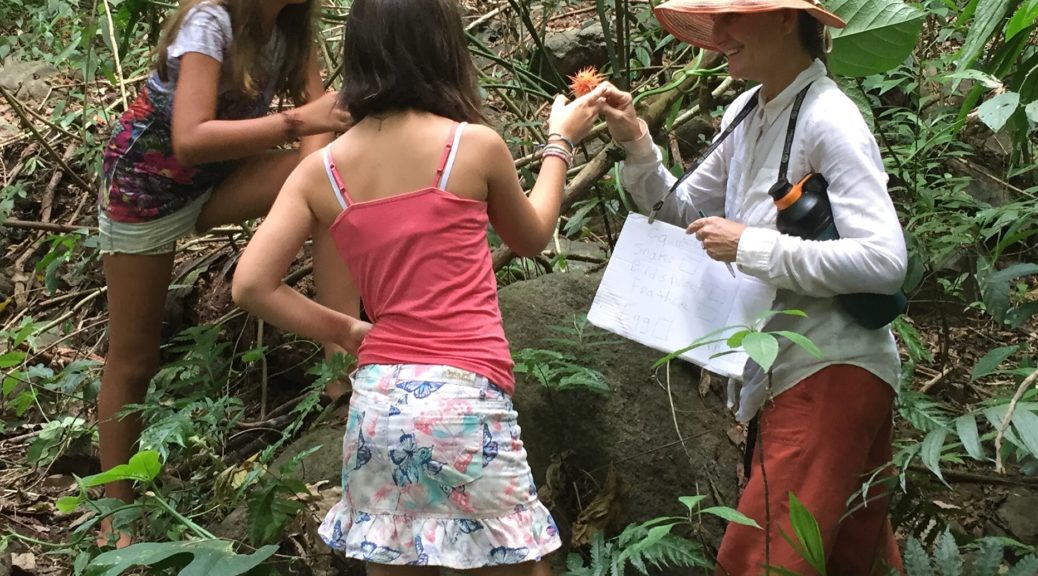
Recently, I had the pleasure of spending a few days with Jennifer Smith and her ACCT organization. My purpose was to witness the on-the-ground reality of ACCT. I had already read through the website and was impressed. Now I wanted to see for myself what is really happening. Can I, and others who want to offset their carbon footprint, feel secure that something real is happening in this area of Costa Rica? Is it making a positive impact? Are the newly-planted trees receiving enough attention so that they will thrive and grow? How does the local community feel about the program?
If you have studied the website, you have learned that it takes more than just going somewhere and putting a sapling in the soil to accomplish something of real and lasting value in the world of carbon offset. The question is whether the tree—or, really, the tropical reforestation project itself—will still be there, growing, and thriving twenty five or more years later. There are both short term and long term challenges that can threaten survival and, to meet those challenges, the groundwork must be done both figuratively and literally:
On both of these counts, Costa Rica—especially the southern zone area near Dominical—scores very high.
There are also issues of tree selection, adequate fencing to keep out animals from destroying the young trees, healthy soil, and planting in places where there is community support. You can read much more about these and other important factors in other places at the ACCT website.
For a tree to thrive, it must spread its roots wide and deep (depending on the tree species). Similarly, a successful planting project must also go wide and deep into the local community and create win-win-win situations for all the participants: the family, the community, and the trees themselves. This must happen on other levels too: ecologically, of course, but also economically, and even psychologically—where people are empowered to become more self-sufficient and environmentally aware.
On so many levels, ACCT succeeds in all these ways. First of all, there is Jennifer herself who wears many hats in a single day. She inspires, leads, teaches, consults, talks to a great variety of people: the farmers, the local community members, the volunteers, the donors and people she might meet randomly at the market and many other places. With all these people, she is always talking up ACCT—whether it is brainstorming, problem-solving, expansion, the bigger picture of carbon offset, etc. That, of course, is in addition to the work that needs to be done including tending the nursery (where I witnessed a tremendous variety of very healthy looking tropical trees), delivering the trees, consulting with farmers and the community and, of course, the actual planting of the trees—and I have no doubt that this is a very incomplete list as I was there for only a few days.
The work is, in actuality, about community building and doing so with integrity. It starts with love of the earth and the people. It proceeds with a clear and pure intention of being of service to each. It builds momentum one relationship or even one brief encounter at a time. Just as a single tree is part of a greater whole, so too is the planting and the care needed for that tree a result of a much bigger community effort. It really does take a community to raise a tree and ACCT does build communities.
ACCT’s main project is in the southern zone of Costa Rica between Dominical and San Isidro in a place called San Juan de Dios. It is where the trees are being planted and where the micro businesses (read about these at other places on the website) are being created. This large area consists of eighteen family farms. On one of these farms there is also the tree nursery where a great variety of healthy looking tropical saplings are being lovingly attended to.
Everywhere on these eighteen farms spread out over fifty thousand hectares (ninety of which have been re-forested) is where win-win-win (for the farmer, the community, and the earth) situations are being created. This effort asks all the participants to raise themselves a little higher to see how doing things a little differently can have a positive effect on everyone including the earth.
In the meantime, while this is all taking root, Jenny and her volunteers must maintain a presence and so, like hummingbirds going from flower to flower, they go from place to place offering a helping hand and sharing words of encouragement, education, and inspiration; and, even more, they help in the grunt work of—for example—carrying saplings across rivers and digging into the dirt. Nothing can be overlooked, no relationship is too small, everything is related and so everything needs attention.
Here, on these thousand of hectares in southern Costa Rica, a wonderful carbon offset project is happening and growing (this is in addition to 400 hectares of re-forestation on other private land). It is easy to see the community being created while the trees are being planted. I fully believe that this project—both by ripple effect and by carbon uptake—is having a positive effect on the world and this is cause enough for celebration. Still, the work almost demands duplication or imitation in other locations all around the equator. It is heartening to see the great work being done by ACCT and also to envision how wonderful the planetary transformation will be when the same is done in a thousand more places. I hope more “hummingbirds” will come to southern Costa Rica, witness this project, and then go out and do their own version around the globe.